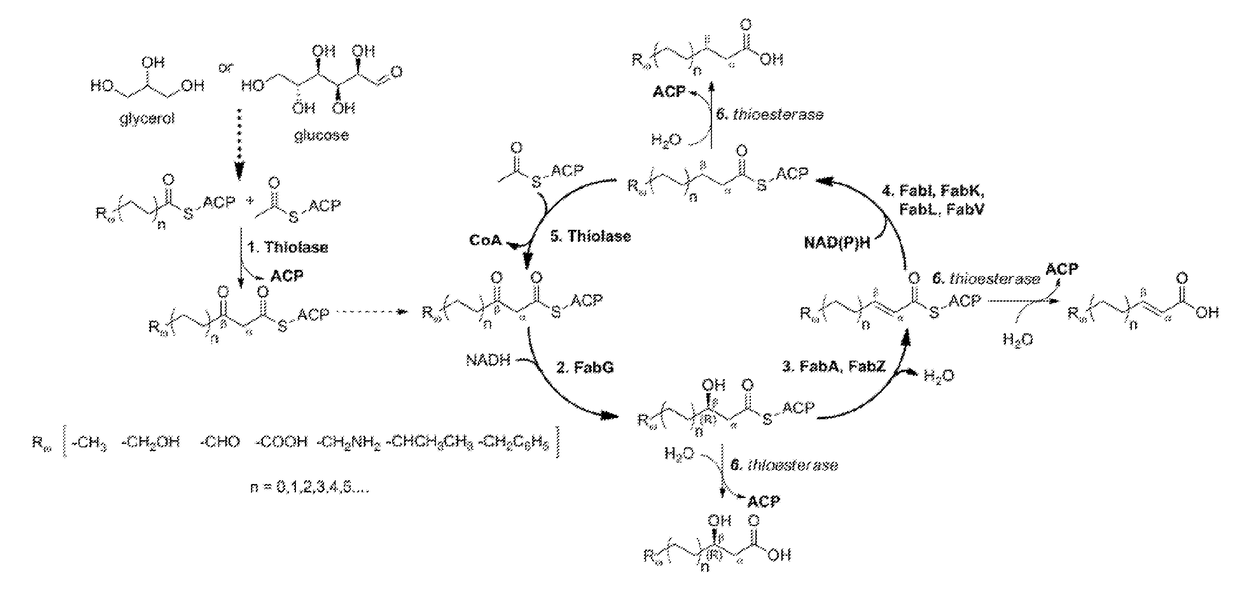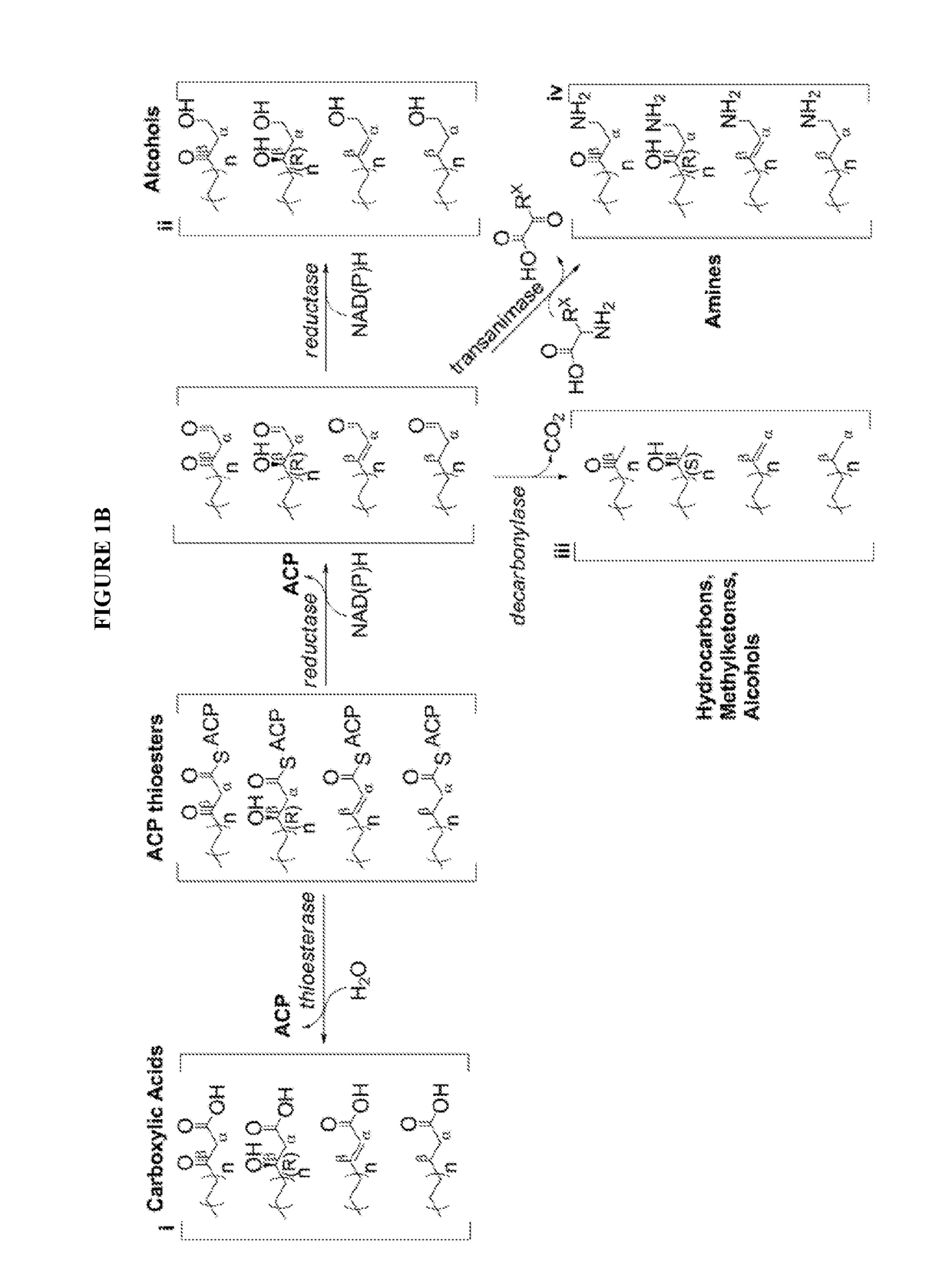Modified fatty acid biosynthesis with acp-dependent thiolases
a technology of thiolases and fatty acids, applied in the direction of lyases, transferases, enzymology, etc., can solve the problems of limiting cell growth and product synthesis, low atp yield associated with the production of products such as hydrocarbons through the fatty acid synthesis pathway, and less efficient operation, etc., to achieve the effect of easy genetic engineering and better functionality
- Summary
- Abstract
- Description
- Claims
- Application Information
AI Technical Summary
Benefits of technology
Problems solved by technology
Method used
Image
Examples
Embodiment Construction
[0083]The technology herein is based on developing an alternative strategy to the efficient production of α-, β-, and ω-functionalized carboxylic acids, alcohols, hydrocarbons, and amines that focuses on the use of a native or engineered ACP-dependent thiolase in combination with type II fatty acid biosynthesis pathway genes / enzymes in E. coli and S. cerevisiae (as examples) to assemble a more ATP-efficient type II fatty acid biosynthesis pathway.
[0084]The thiolases described herein are enzymes capable of performing a non-decarboxylative condensation between a growing acyl-(acyl-carrier-protein) (acyl-ACP) and acetyl-ACP to form a β-ketoacyl-ACP 2 carbons longer than the starting acyl-ACP.
[0085]The bacterial type II fatty acid biosynthesis system has been harnessed for the synthesis of numerous products, including fatty acids, fatty acid methyl esters, fatty acid ethyl esters, fatty alcohols, and alkanes. At the core of this system is an elongation cycle that uses discrete enzymes t...
PUM
| Property | Measurement | Unit |
|---|---|---|
| Mass flow rate | aaaaa | aaaaa |
| Mass flow rate | aaaaa | aaaaa |
| Mass flow rate | aaaaa | aaaaa |
Abstract
Description
Claims
Application Information
 Login to View More
Login to View More - R&D Engineer
- R&D Manager
- IP Professional
- Industry Leading Data Capabilities
- Powerful AI technology
- Patent DNA Extraction
Browse by: Latest US Patents, China's latest patents, Technical Efficacy Thesaurus, Application Domain, Technology Topic, Popular Technical Reports.
© 2024 PatSnap. All rights reserved.Legal|Privacy policy|Modern Slavery Act Transparency Statement|Sitemap|About US| Contact US: help@patsnap.com










